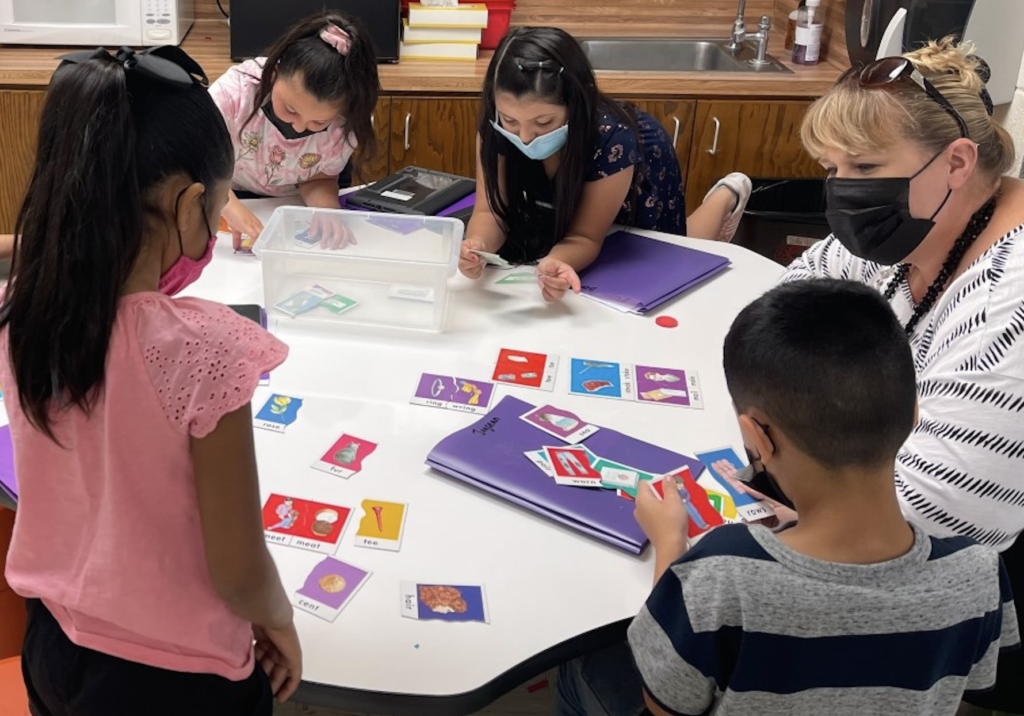Blended learning is a model of teaching that provides students with voice, choice, and an opportunity for instruction that is tailored to each individual student.
“Blended learning is personalized and prescriptive teaching,” Stuart Place Elementary second-grade teacher Carol Paradiso said. “It is using student data to plan for instruction. Students and teachers are using data to monitor growth.”
Harlingen CISD planned to implement blended learning prior to COVID-19 but required additional technological devices and more internet access for students.
“A lot of the things that used to be barriers for blended learning were able to be solved,” Blended Learning Specialist Dr. Jessica Hruska said. “We were able to get more devices and internet connectivity because of COVID. This was like a silver lining of COVID. Now, we are able to kind of accelerate our blended learning plan throughout the district.”
With more student devices, internet connectivity, and with the help of a $300,000 Raising Blended Learners grant, a Raise Your Hand Texas initiative, HCISD began implementing a blended learning plan.
“About two years ago we applied and went through a yearlong process,” Dr. Hruska said. “We received the grant in 2020, but due to COVID, it got pushed back. During that time, we studied what blended learning could look like in our district. That was kind of the first step.”
In the process of implementing blended learning across the district, Bowie Elementary and Stuart Place Elementary were selected as model campuses. These two schools have fully immersed themselves into the blended learning model.
“We are going to really focus on Bowie Elementary and Stuart Place Elementary so we can create those model schools,” Dr. Hruska said. “Then our teachers can come in and see what blended learning looks like and learn directly from the teachers that are currently going through the process.”
In addition to setting up two model campuses, 120 teachers and staff members from across the district went through some professional development, called Blended Learning UTeach, over the summer to prepare for this type of teaching and learning.
Blended learning consists of three main components. It is personalized, data-driven instruction that encourages student ownership.
“We analyze data and really see where that student is at,” Dr. Hruska said. “We personalize the instruction to meet the kids where they are based on that data. We use technology to leverage some of those different modes and modalities to get those activities to the students. Eventually, we want students to have a little bit of ownership, and their own path, space, or place in how they learn.”
Every classroom has different types of learners. Blended learning allows teachers to rigorously teach each individual student.
“You cannot give a student a task that is too easy or too hard for them because this can create gaps in learning or possible behavioral issues,” Paradiso said. “Blended learning is the key to student mastery in this day and age. With this type of learning, we are teaching students on all different levels”
Currently, the district is following a station rotation model of blended learning.
“I feel that this type of learning is the answer all teachers are looking for” Paradiso said. “This type of teaching and learning is moving away from a one-size-fits-all approach. If you teach to a student’s instructional learning level, then you will see learning gaps begin to close. Students will show a year’s worth of growth in their grade, and you will see less frustration and more excitement.”
Overall blended learning allows students and teachers to make goals, keep track of their growth, adjust as needed, and ultimately help every student achieve success.
“It allows for students to show growth in their learning, close gaps, trust their teacher and peers, prepare for college, and creates a love for learning,” Paradiso said. “That is why teachers become teachers, to change the lives of children and teach them to learn and grow. This method is the answer for all classroom teachers. Effectively implementing blended learning will change the future for students.”
Harlingen CISD is one of twenty schools selected as blended learning demonstration sites in the second cohort of the Raising Blended Learning initiative. Each participating district receives up to $300,000 in grant funding plus additional in-kind technical assistance to implement a personalized learning program within their district.


